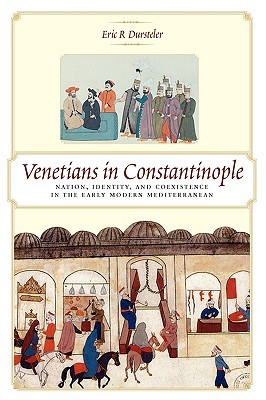
- We will send in 10–14 business days.
- Author: Eric R Dursteler
- Publisher: Johns Hopkins University Press
- ISBN-10: 0801891051
- ISBN-13: 9780801891052
- Format: 15.2 x 22.9 x 1.8 cm, softcover
- Language: English
- SAVE -10% with code: EXTRA
Reviews
Description
Historian Eric R Dursteler reconsiders identity in the early modern world to illuminate Veneto-Ottoman cultural interaction and coexistence, challenging the model of hostile relations and suggesting instead a more complex understanding of the intersection of cultures. Although dissonance and strife were certainly part of this relationship, he argues, coexistence and cooperation were more common.
Moving beyond the "clash of civilizations" model that surveys the relationship between Islam and Christianity from a geopolitical perch, Dursteler analyzes the lived reality by focusing on a localized microcosm: the Venetian merchant and diplomatic community in Muslim Constantinople.
While factors such as religion, culture, and political status could be integral elements in constructions of self and community, Dursteler finds early modern identity to be more than the sum total of its constitutent parts and reveals how the fluidity and malleability of identity in this time and place made coexistence among disparate cultures possible.
EXTRA 10 % discount with code: EXTRA
The promotion ends in 16d.15:30:43
The discount code is valid when purchasing from 10 €. Discounts do not stack.
- Author: Eric R Dursteler
- Publisher: Johns Hopkins University Press
- ISBN-10: 0801891051
- ISBN-13: 9780801891052
- Format: 15.2 x 22.9 x 1.8 cm, softcover
- Language: English English
Historian Eric R Dursteler reconsiders identity in the early modern world to illuminate Veneto-Ottoman cultural interaction and coexistence, challenging the model of hostile relations and suggesting instead a more complex understanding of the intersection of cultures. Although dissonance and strife were certainly part of this relationship, he argues, coexistence and cooperation were more common.
Moving beyond the "clash of civilizations" model that surveys the relationship between Islam and Christianity from a geopolitical perch, Dursteler analyzes the lived reality by focusing on a localized microcosm: the Venetian merchant and diplomatic community in Muslim Constantinople.
While factors such as religion, culture, and political status could be integral elements in constructions of self and community, Dursteler finds early modern identity to be more than the sum total of its constitutent parts and reveals how the fluidity and malleability of identity in this time and place made coexistence among disparate cultures possible.


Reviews